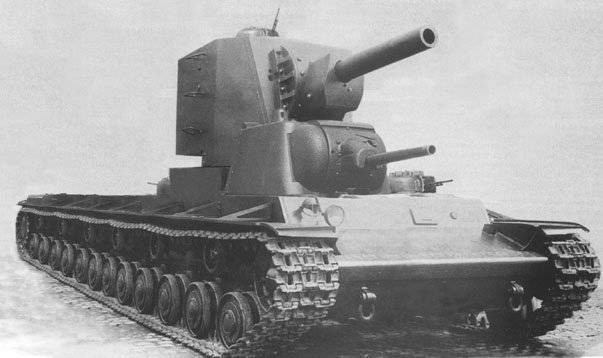Unusual tanks of Russia and the USSR. T-42 Super Heavy Tank

In the late 20s and early 30s of the twentieth century in all the leading tank-building powers of that time, many different directions were developed. tank projects. Every year, new vehicles of various types were created and launched into series, from light tankettes for reconnaissance and communications to giant ones, weighing more than 60 tons, clumsy but well-armed vehicles capable of independently performing complex combat missions. Of course, the USSR could not, for political reasons, not participate in this race. According to the rearmament program adopted in 1929, work began in the Soviet Union on projects for super-heavy tanks, or as they were also called breakthrough tanks. One of these projects, aimed at creating a powerful tank equipped with the most modern weapons, was the T-42 project.
Considering the unsuccessful experience of creating a domestic model of a T-30 breakthrough tank, only by Soviet engineers and designers, the German engineer Edward Grote was invited to implement this project. He was soon instructed, in a short time to create a machine that meets the requirements of the Red Army rearmament program. Arriving in the Soviet Union in March 1930, E. Grote together with a small group of German engineers immediately began work on the creation of an average TG tank, but this tank did not satisfy the admissions committee, work on its creation was stopped. But soon, E. Grote, taking into account the mistakes of the TG project, creates a new project of the super heavy tank TG-4, which, like the previous one, did not make the proper impression and was not highly appreciated by the leadership of the UMM RKKA. However, an ambitious and glory-seeking engineer after some time submits to the commission for consideration a draft machine weighing more than 100 tons, TG-5 or its other designation T-42. Essentially it was a deeply reworked and improved TG-4 project. As conceived by the designer, it was supposed to be a five-tower tank with armament located in two tiers. The first tier, which included weapons, located in four towers installed around the main central tower, in each of the two towers located in front of the hull, the horizontal sector of fire of which was equal to 125 degrees, was installed 45 mm 20K gun and paired with 7.62 mm tank gun DT-29.

In the towers located behind the central one, it was supposed to install one 7,62 mm or one 12,7 mm anti-aircraft machine gun, with a high elevation angle to repel air attacks. The central rotating turret, with a small commander's turret placed on the roof, mounted on a tall box of turrets, was equipped with heavier weapons, an 107 mm cannon and a 7.62 mm DT-29 machine gun. The two-tier arrangement provided fairly high indices of fire density and increased the total weight of the volley, (some sources mention a three-tower armament scheme). Hulls machine intended to produce riveted, welded, the thickness of the armor plates 50 -70 mm, allows the machine to withstand a direct hit by an armor-piercing projectile 37 mm anti-tank gun, the distance and reciprocal m 1000 107 mm artillery fire with the same distance, high-explosive charge to destroy it. The undercarriage of the tank was a very complex structure, the 17 of the interlocked road wheels were connected to the 2 and 3 rink trucks. The power plant of the machine included two diesel diesel engines of domestic production PT-100, HP 1000 power. produced by the Elektrik plant and used at one of the first diesel locomotives of the engineer Ya. M. Gakkel built in our country. Servomotors were involved in the machine control system, which was an innovation for that time, but extremely complicated the chassis design, which in turn was not distinguished by reliability and high maintainability.
All this ultimately made the tank T-42, very expensive and difficult to produce in the car, however, this is typical for all projects of the German engineer. By the time the project was reviewed by the UMM commission of the Red Army at the Kharkov Locomotive Plant, work was already underway to create another heavy domestic T-35 tank, which, according to the commission, was more reliable and less complicated, therefore, cheaper to manufacture. With almost identical specifications, the T-42 project was rejected in favor of the T-35. Which in the near future was completed and adopted by the Red Army. So ended story of this still unrealized project, a super-heavy breakthrough tank by engineer Edward Grote. It is difficult to say what the future fate of this vehicle would be if it were put into service, perhaps it would be the same as all the giant tanks, most of whom never had to take part in the hostilities.
Information